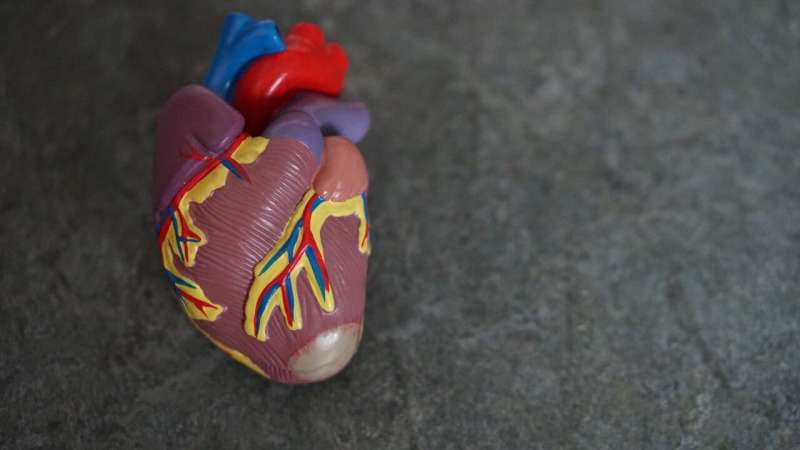
A new cardiac patch developed by a collaborative team led by Western University is just the stuff that could get your blood pumping—literally.
The ultra-flexible cardiac patch, designed by Western Engineering professor Kibret Mequanint and his collaborators at the University of Manitoba, may one day be used to restore function to a damaged heart following a cardiac arrest.
After a heart attack, and a minimally invasive intervention to restore blood flow to the muscle, the heart is weakened, even after a successful surgery or intervention. Most of the cardiac cells responsible for contracting the heart are dead before the intervention, stopping it from performing its most important task: pumping blood.
The concept of cardiac patches, as a treatment option for heart failure, is not new. What makes the new patch—yet to be tested on a human heart—so special is its method of delivery and its conductivity, said Mequanint, a renowned expert in biomaterials, tissue engineering and regenerative medicine.
“To date, delivery of cardiac patches almost always requires an open-chest surgery,” said Mequanint. “These patches are also not electrically conductive, meaning they cannot integrate to the heart muscle for functional recovery.”
The new patch has the shape-shifting ability to be folded and squeezed into a syringe or a commercial catheter, allowing it to be injected and transported on a ‘fantastic voyage’ to the weakened heart muscle. Upon arrival, the patch ‘remembers’ its original shape, unfolds and integrates to the heart muscle.
Once there, electrical conduction is key. The weakened heart muscle, now scar tissue, cannot regenerate on its own nor pump enough blood to the body. The new conductive and injectable cardiac patch, designed and optimized by Mequanint and his collaborative team at the University of Manitoba, was able to restore majority function to a damaged heart in an animal model, detailed in a study published today by Nature Biomedical Engineering.
“There are electrical signals running through the heart so when you introduce a cardiac patch, the kind of which developed before, it’s reinforced but the signal is also blocked and that’s a problem,” said Mequanint. “There is no conduction anymore, so the heart doesn’t function properly.”
https://youtube.com/watch?v=Na67NqSx2po%3Fcolor%3Dwhite
The new cardiac patch is engineered from elastin, gelatin and carbon nanotube with embedded cardiac cells. Carbon nanotubes are highly conductive while elastin is ultra-flexible, making the design and delivery method—which is minimally invasive—the perfect solution for the long-standing medical dilemma of enhancing performance after heart failure.
For some patients, heart transplant is the only option following heart failure but organ donors number far fewer than those on the waiting list. In Canada, for example, only 200 heart transplants are performed per year but there are more than 35,000 heart attacks. In the United States, there are 2,000 annual heart transplants but the number of heart attacks jumps to 805,000.
Source: Read Full Article
